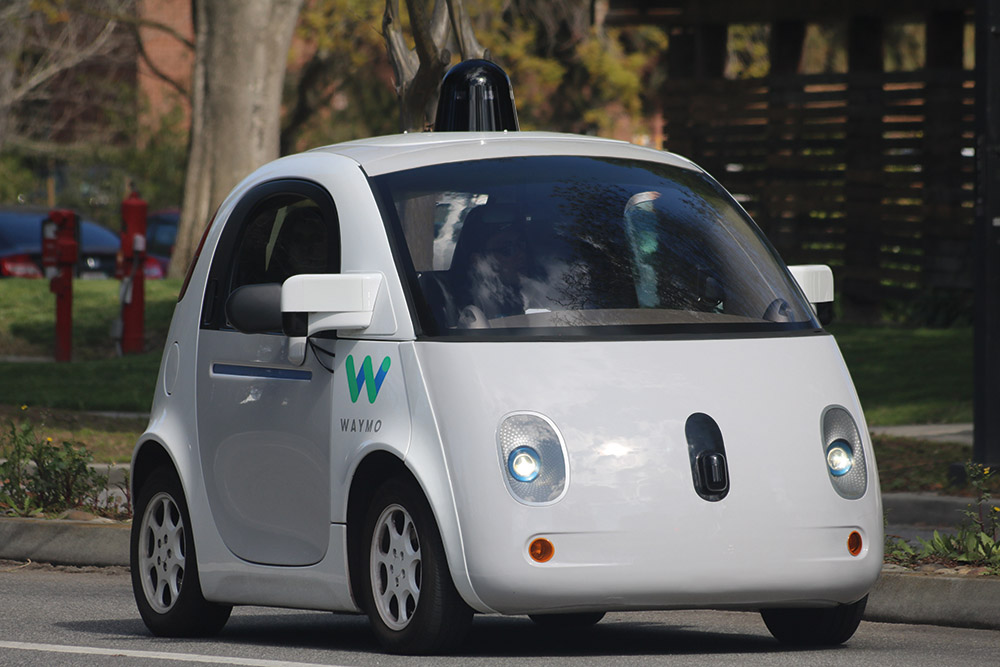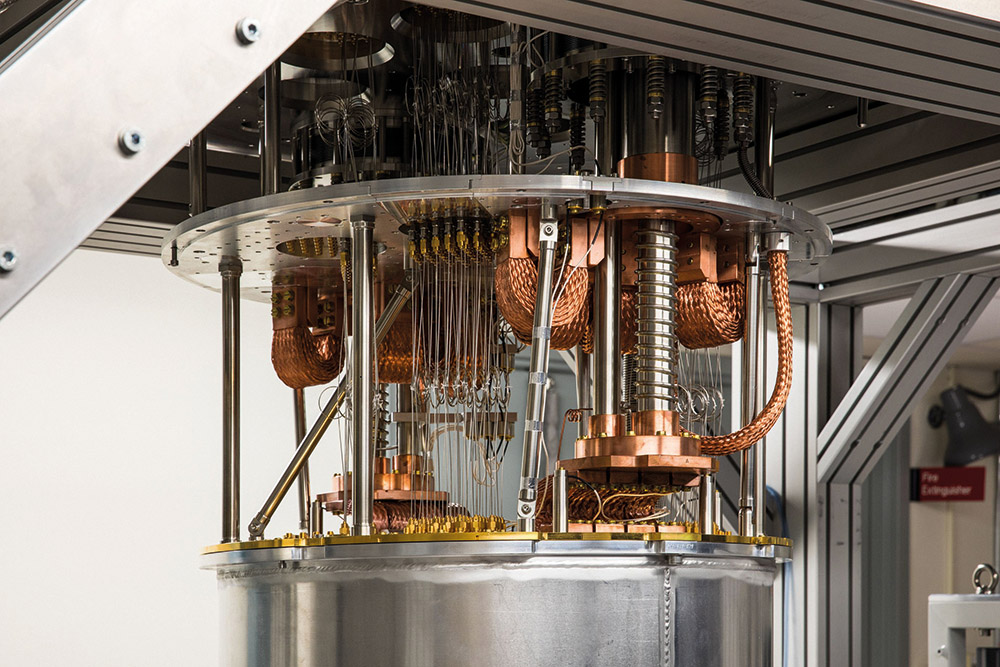BV’s RICHARD THOMAS gazes into his (liquid) crystal ball and shares visions of future technology, from fusion power to, well, flying cars…
FUSION power is, according to the experts, 30 years away. It has always been 30 years away. It was 30 years away 30 years ago, when I was studying for my physics A-level.
Most experts agree the magic 30 figure still stands – although a couple of start-ups are hoping to unveil something of practical and commercial interest sooner than that. More on those developments later, but while we’re waiting for fusion, let’s have a look at some other long-promised technologies…
Driverless cars
The development of autonomous cars has gone hand-in-hand with that of electric vehicles. The early gains and publicity have gone to the likes of Tesla, Google and Apple, but the tech giants have now been joined by Audi, BMW, Ford, Mercedes and Volvo. Just about every major car manufacturer has some skin in the game, and the technology is racing ahead of legislation. A few highly publicised accidents during trials may delay the introduction of driverless cars on public roads, but testing continues. Uber had its own self-driving car scheme under development (suspended after a fatal crash in March 2018), and in August it announced a $500m investment from Toyota for a future joint-development programme.

Conventional electric planes
An article like this wouldn’t be complete without a mention of electric aircraft. First, conventional electric planes. “Conventional” in this case means that power stored in batteries is used to turn a propeller. BV covered this fast-moving area in the Autumn edition, and if the Norwegian aviation authority, Bye Aerospace, easyJet and Wright Electric have anything to do with it, big news will be rolling in over the next 10 years.
The ‘no moving parts’ electric plane
A scale-model of such a plane has been developed by MIT scientists, who recently published their results in the scientific journal Nature. The aircraft has no moving parts, flying courtesy of “ionic wind”. An array of high-voltage (20,000-volt) electrodes at the front of aerofoils ionise nitrogen molecules in the air, which are attracted from the positive to the negative electrodes (at the rear). On their way, said charged molecules collide with their uncharged counterparts, creating “wind” – which travels over the aerofoils, creating lift and thrust. Their prototype resembles a model plane being launched from a ramp, but has covered more than 60 metres under its own steam.
The general concept is proven, and the race is on to develop something more practical.
Battery tech
The range of electric cars and planes is limited by the energy density of their batteries, and the speed at which those batteries can be recharged.
During charging, lithium ions inside a battery move from the positively charged electrode, or anode, towards the negatively charged cathode. The charging time is limited by the speed the ions can move, and on the material the battery is made of.
Cambridge University researchers have discovered that a group of materials, niobium tungsten oxides, greatly increase the speed of ions, and thus the speed of charging. Any improvement in battery technology is good news, not just for electric cars and planes but also for grid power storage, for solar energy.
Maglev trains
While we’re on the subject of transport, don’t forget maglev. In case you have forgotten, maglev is an abbreviation of magnetic levitation, a system that uses magnets to suspend a train above the track, and to propel it forwards.

The first maglev patent was granted in 1905, but it wasn’t until 1979 that the first working train to use the system was opened to the public in Hamburg. However, this train was built for a transport exhibition, and only operated for a few months. Further test systems were built in the-then USSR, and the World’s first commercial maglev system linked the UK’s Birmingham Airport with a railway station. A railway station which was just 600m away.
On its inauguration, in 1984, it was very popular with passengers; prohibitive maintenance costs led to its closure in 1995.
Still in the UK, a maglev train system was proposed in the early 2000s to link London and Scotland via Birmingham, Manchester, Leeds and Newcastle. The proposal was rejected in 2007, in favour of a conventional high-speed rail line, the HS2.
The German company that was behind the proposal rejected by the UK provided trains for the Shanghai maglev system – currently the fastest electric train in the world. A new, eight-kilometre maglev system has been opened in Beijing, and other Chinese cities have similar projects under consideration.
In Japan, a maglev system is being constructed between Tokyo and Osaka. It is expected to reach speeds of 500 km/h, abbreviating a journey that takes four hours by bullet train to just 40 minutes.
Elsewhere in Asia, maglev systems have been proposed in Bangalore, Hong Kong and Taipei; South Korea’s network has been in operation since 1993.
In the US, various intercity projects have been proposed – but some have already been abandoned. Still under development is Elon Musk’s Hyperloop, a maglev train system in a vacuum tube.
Facial recognition
Facial recognition is moving from film fantasy to real life, courtesy of US firm Facefirst, whose technology is aimed at law enforcement, casinos and transport. The technology can a crowd for known threats (terrorists or shoplifters, pick your enemy) and can be used for access to buildings, events or vehicles. Facefirst claims to have 451 global deployments across all sectors, including law enforcement, retail and military.

Bionic limbs
Remember The Six Million Dollar Man? At the time, the opening sequence went: “We have the technology: we can rebuild him.” In 2018, there are companies developing hands that grip, and legs that run. The i-digits bionic hand from Touch Bionics can make gestures, operate a mobile phone app, and make fine muscle movements such as operating a camera. The company describes its device as appropriate for partial hand-loss, but as it can replace all five digits.
Quantum computing
The idea was first proposed at a Physics Of Computation conference in 1981, but the practical implementation of quantum computing is still lagging. In a nutshell, the physics of quantum mechanics will allow this new generation of computers to work faster with more data. A working model will be faster than classical supercomputers. Much faster.

Why do we need quantum computers? Solving complex mathematical problems, modelling structure and behaviour of molecules in chemical reactions, improving artificial intelligence and modelling financial markets. Finding prime factors of an integer could break cryptography as we know it now, but quantum computers could also create new cryptographic methods that don’t rely on factorisation.
Modelling of chemical reactions could lead to new molecules designed for medical use, and improve the Haber-Bosch process used for the production of ammonia (a fertiliser for crops, if you were wondering).
The first experimental versions of the quantum computer have been connected to the internet, and toolkits released to allow the public to write simple programmes for them. Working prototypes are still years away, but as MIT professor Isaac Chuang said, “It is no longer a physicist’s dream — it is an engineer’s nightmare.”
Flying cars
One of the staples of 1950s science fiction was the flying car. Most early predictions for the year 2000 suggested we would be doing our daily commute in three dimensions, rather than two. But 2000 came and went with no sign of the flying car; approaching 2020, and we might be closer.
US company Moller has been teasing the world with its Skycar for most of this century, but now the Transition, made by Terrafugia, has gone on sale in the States. Rather than being a car that flies, this is a plane that can be driven: it requires a sports-pilot licence to fly from airport to airport, but then it can be driven out of the gate and on to the final destination by road.
The planned follow-up to the Transition is the TF-X. This is planned to be more like the flying car promised by 1960s animated series The Jetsons. It won’t need to take off or land at an airport, so owners will be able to fly door-to-door. With the number of drivers who seem to have trouble with left, right, forwards and backwards, adding up and down may cause problems.
Fusion
Ah, back to fusion. The idea of nuclear fusion as a source of energy has been in the “promising-but-more-research-needed” category of technology for many years now. Well, 30, at least.
But maybe that could change soon. The UK’s Tokamak Energy has been developing its own compact fusion system, designed for use in factories, and aims to supply energy to the grid by 2030. Canada’s General Fusion is even more ambitious. Its technological solution for dealing with the huge temperatures and pressures required for fusion is said to be promising, with the company hoping for a demonstration model on a commercial scale within five years.
The Canadian government is evidently convinced, having granted the company C$50m from its Strategic Innovation Fund.
Conclusion
Have we missed anything? Maybe you work on a project that could be the basis for a future article, or perhaps you run a business developing the next giant leap for mankind. If it isn’t veiled in secrecy, BV would love you to hear form you. Just send an email to [email protected]




























